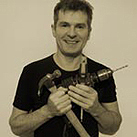|
|
|
|
|
|
Radiators not heating up. |
|
|
|
|
|
|
|
|
|
|
|
|
|
|
|
|
|
|
This is quite a common problem. There are a few things you can look at before get a heating engineer in. |
|
|
|
| |
Radiator warm at the bottom but cold at the top
This is usually due to air in the system. Most commonly happens after you've had the heating off for lengthy periods.
Use a radiator key to "bleed" the air out. Unscrew the bleed screw just enough so you hear air hiss out. Get ready to tighten it up as soon as water starts to come out. The radiator should feel warm at the top now. N.B. If your heating is a combi boiler or high pressure system then bleeding will reduce the pressure and may stop them working. You will need to repressurise the system.
(see Low pressure on combi boiler) |
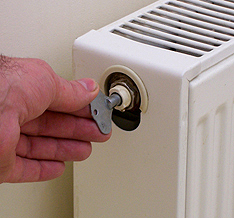 |
|
|
|
| |
|
|
|
|
|
|
|
| |
All radiators warm except one cold all over.
If you find one radiator not hot clealy hot water isn't getting to that one radiator. Check that both the valves are open. Should be fully anticlockwise. Sometimes they are very stiff. If you can't turn them try unscrewing the screw on the cap and pull the cap off to reveal a square shaft. You can get a spanner on that.
NB the larger valve is normally used to control the amount of hot water enters the radiator. You can use that to control the radiator temp. The smaller valve is purely an isolation valve and is normally always left open. |
|
|
|
| |
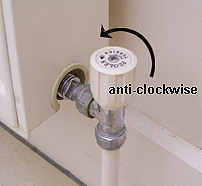 |
|
|
|
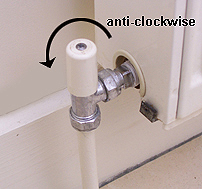 |
|
|
|
|
|
|
|
|
|
|
|
|
|
|
|
|
|
|
|
|
|
|
|
|
|
|
|
|
|
|
|
|
|
|
|
|
|
|
|
|
|
|
|
|
|
|
|
|
Temp. control valve. Anti-clockwise to open |
|
|
Smaller isolating valve. Anti-clockwise to open |
|
|
|
|
|
|
|
Thermostatic valves sticking closed
These valves are the type where you can turn a dial to select a room temp. and the valve opens and shuts automatically.
If you have a themostatically controlled valve on your radiator sometimes they will seize up so that even though they seem open they are closed. This commonly happens to thermostatic valves.
It's a fairly straightforward job to change these valves but you usually have to drain down your central heating system and make sure it's working again afterwards. I would advise beginners to get a professional in to do this.
As a quick fix for a seized up valve simply unscrew the top half of the valve ONLY. Unscrew the round knurled collar. (you can usually do this with your fingers). With the top off you should see a central round metal pin. You should be able to push this up and down a few mm. If not it has got seized shut. Try gently tapping it and it should free up. When the pin is fully up the valve will be open and hot water will flow int the radiator.
NB Don't unscrew either of the hexagonal nuts otherwise you'll have a flood of water |
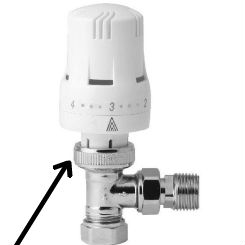 |
|
|
|
|
|
|
|
|
Knurled collar on thermostatic valve |
|
|
|
|
|
|
|
|
|
|
|
|
|
|
|
|
|
|
|
|
|
|
|
|
All radiators cold?
Is the boiler actually working? Check that the gas burners are ignited.
If you have a combi boiler or a high pressure heating system check that the pressure on the pressure dial is in the range as specified in the instruction manual and top up with water if necessary. (see low pressure on combi boiler)
Also check that any room thermostats have not been turned down
too low.
|
|
|
|
|
|
|
|
|
|
|
|
|
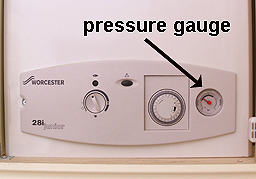 |
|
|
|
|
|
|
All radiators only a little warm but not hot enough. Could be one of several causes.
Check the room thermostat settings
Check the temperature setting on your boiler
Failing that
you may need to get a professional in. Radiators. hot at the top but cool at the bottom This is quite unusual but normally means your heating system has got some sludge in it. This circulates
around and gets trapped at the bottom of one or more radiators causing them to block up so that hot
water can't circulate properly. You will need to get your heating system professionally flushed out by a heating engineer.
If it's only one radiator you could consider removing the radiator and flushing it out
with a hose.
|
|
|
|
|
|
|
|
|
|
|
|
|
|
|
|
|
|
|
|
|
|
|
|
|
|
|
|
|
|
|
|
|
|
|
|
|
|
|
